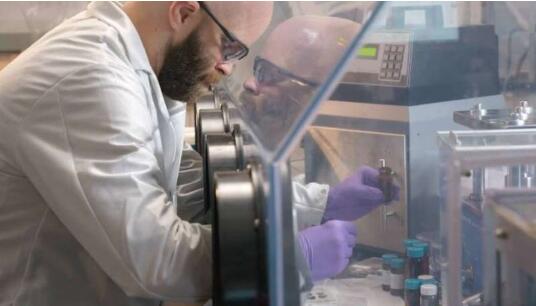2019-11-13

According to foreign media reports, a team of researchers from the Johns Hopkins Applied Physics Laboratory in the United States designed a flexible lithium-ion battery, which can work normally even under extreme conditions such as cutting, immersion and simulated ballistic impact, and now the battery will not catch fire.
At present, lithium-ion batteries are made of flammable and combustible materials, which are prone to catastrophic fires and explosions, most of which occur suddenly without any discernible warning. Because of the danger, Samsung Galaxy Note7 mobile phones are forbidden to be used on aircraft, and the Navy also prohibits the use of electronic cigarettes on ships and submarines to reduce the danger of such flammable devices.
As such batteries have gradually become the preferred energy storage tools for portable electronic devices, electric vehicles, grid storage and other applications, improving their safety will mark a major change in the production and use of lithium-ion batteries.
Recently, in the journal chemical communication, the research team led by Konstantinos gerasopoulos of APL research and Exploration Development Department announced the discovery: a new water in salt (WIS) and water in bisalt (wibs) electrolyte, when combined with polymer matrix, can reduce water activity, improve battery energy, prolong its life cycle, and eliminate the flammable, toxic and highly active solvent in lithium-ion batteries at the same time. Researchers said that this electrolyte is a safe and powerful substitute.
Gerasopoulos, senior research scientist and chief researcher of APL, said: "From mobile phones to cars, lithium-ion batteries have become a common product in daily life, and it is very important to continue to improve their safety to further promote the development of energy storage technology. Since the commercialization of lithium-ion batteries in the early 1990s, their shape factors have not changed much. We still use the same cylindrical or rhombic battery cells, in which the liquid electrolyte and the required sealed packaging are different from this shape Great relationship. "
"Our research group is committed to using a polymer with improved safety and shape factor to replace flammable liquid electrolytes, and recent papers show that water-based flexible polymer lithium-ion batteries can be manufactured and operated in open air, and their usability and performance have been improved."
In the new study, the team overcame the limitations of liquid wibs electrolytes. Due to the presence of water, liquid wibs electrolytes are intrinsically safe, but their energy is limited and are incompatible with most commercial anode materials. Researchers developed "stable, wibs based aqueous gel polymer electrolyte (GPEs). In the presence of wibs, researchers polymerized water-soluble acrylate through UV mediated to make this electrolyte."
Scientists have proved that the UV curing process and the integration of wibs in the polymer can improve the retention of free water, which will be coordinated by the polymer, so as to improve its electrochemical stability. The researcher said, "we have proved for the first time that the low-cost anode nano lithium titanate (Li4Ti5O12, LTO) widely used in the market can be used in aqueous polymer lithium-ion batteries and can be reliably recycled for more than 100 times."
In 2017, researchers developed and issued a breakthrough flexible battery. The new polymer electrolyte developed this time further improved the damage tolerance of this battery.
Gerasopoulos said, "the first generation of flexible batteries are not as stable in size as the batteries we now manufacture. The UV curable polymer we developed is an independent, high mechanical strength film, similar to contact lenses. Such batteries can work continuously for several days even if they are completely exposed to the air. They can also be burned, cut, or otherwise put pressure on them, and they can still work."
"We have successfully improved the mechanical strength and electrochemical stability of GPE, and can transition this new supersaturated hydrogel polymer electrolyte (GPE) from proof of concept to practical application."
Jeff maranchi, regional director of APL materials science project, said, "our team is constantly improving flexibilityLithium ion batteryAnd we hope to turn this new research into a prototype within a year. "
Article source:BatteryChina
0755-89480969
info@powercome.hk
B1202, building 1, Mogen Fashion Industrial Park, No. 10, shilongzi Road, Xinshi community, Dalang street, Longhua District, Shenzhen
www.powercome.hk